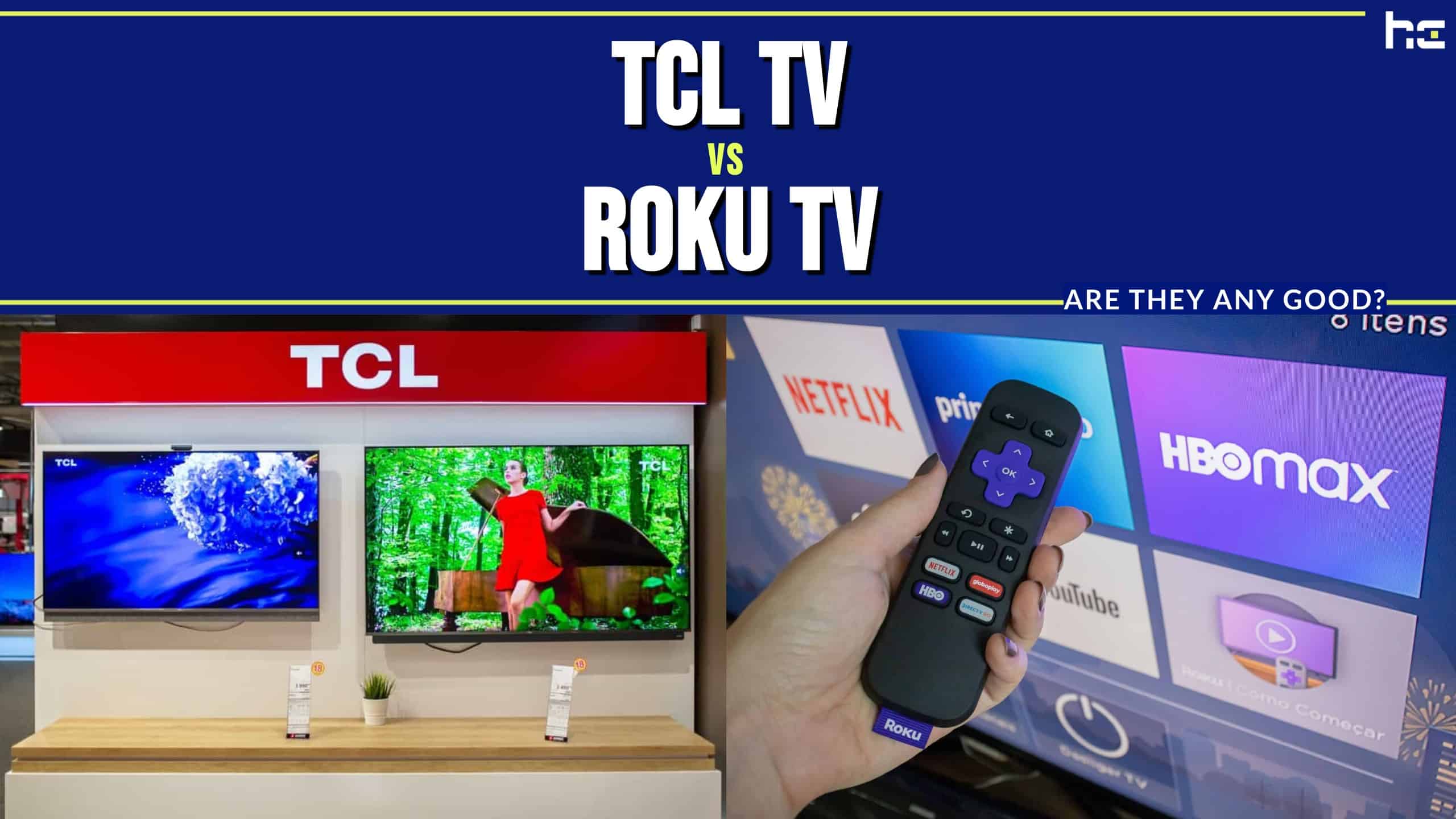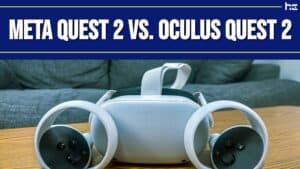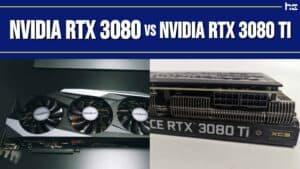Key Points:
- Smart TVs are upgraded traditional TVs that run on an operating system. The OS lets you access many other apps and online content in addition to your cable programming.
- Smart TVs allow you to use digital assistants with your TV. Roku TVs are more compatible with digital assistants than TCL’s other TV models.
- TCL’s Roku TVs are among the more affordable options for HDR footage. The 5-Series TV is one of the only TVs which includes compatibility for both HLG and Dolby Vision.
Tech companies are trying to bring streaming services to their smart-home products. Roku was one of the first smart TV add-ons. Much like a digital cable box, it allowed users to transform their regular old TV into a smart device for streaming purposes.
Today, most smart TV, including TCL’s Roku TVs, come with a built-in Roku box. These are an excellent choice for anyone who is a big fan of Roku and wants to upgrade their TV while keeping their Roku account active. But are they worth it? First, let’s see if they stand up to comparison well.
TCL Roku TV vs. TCL Smart TV: Side-By-Side Comparison
| TCL Roku TV | TCL Smart TV | |
|---|---|---|
| Display Size | 32”-75″ | 32”-75″ |
| Operating System | Roku | Android, Google |
| Digital Assistants | Siri, Hey Google, Alexa, Roku Voice | Google Assistant with hands-free voice control. |
| Sound Technology | Dolby Atmos | Dolby Atmos |
| Resolution | 720p-8K | 720p-4K |
| High Dynamic Range | HDR10, HLG, Dolby Vision | HDR10, HLG, Dolby Vision |
| Input Ports | Varies | Varies |
| Variable Refresh Rate | 6-Series & 8-Series | 5-Series & 6-Series |
| Backlight | Varies | Varies |
TCL Roku TV vs. TCL Smart TV: What’s the Difference?
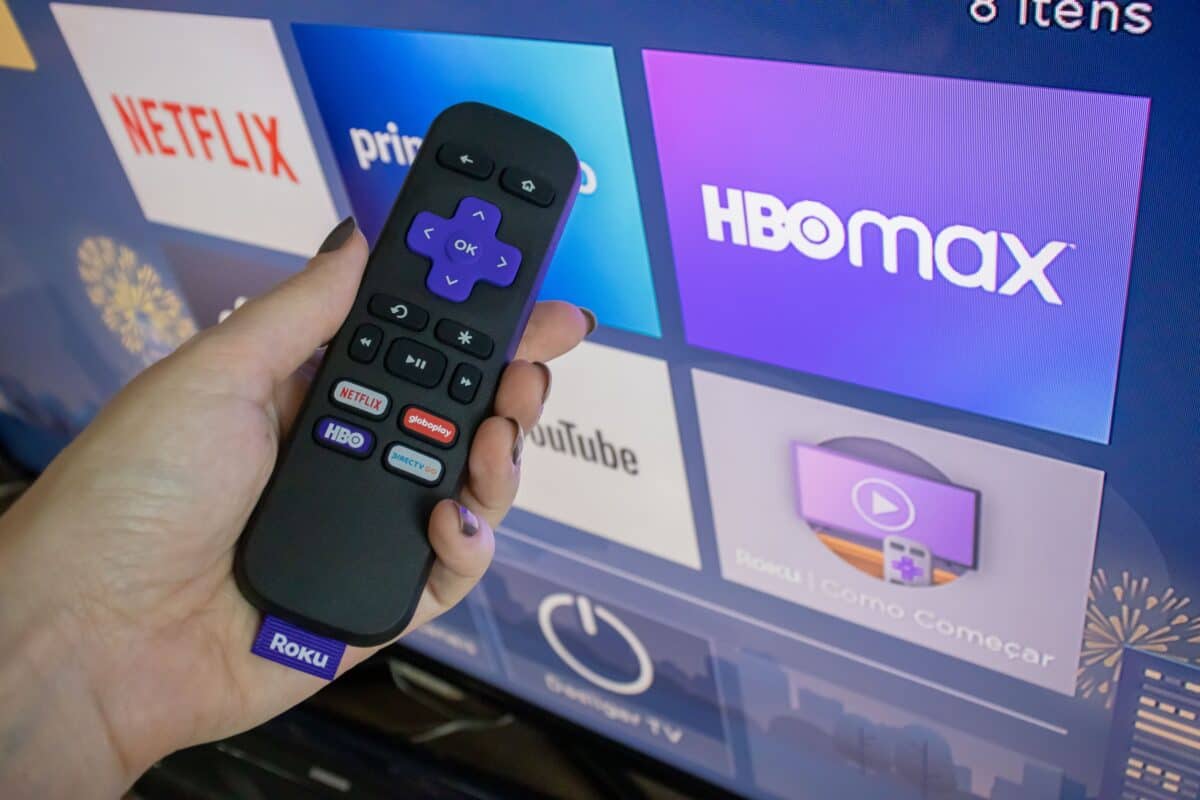
Roku devices have come a long way, and DVP N1000 and LT created the name we love today.
©renata colella/Shutterstock.com
While it might be tempting to grab any smart TV off the shelf and ring it up, some notable differences exist between Roku and other Smart TVs. Here’s what you’ll want to consider when purchasing a smart TV.
Operating System
One of the primary differences between the different smart TVs is the TV’s operating system. Older TVs didn’t have to be loaded with an operating system. However, for your TV to interface with you, it needs an operating system that allows you to input commands.
TCL primarily makes Android, Google, and Roku TVs. Still, their higher-end TVs also interface with Siri and other Apple products too. In addition, Roku TVs have their own proprietary operating system based on the original Roku units.
TCL provides televisions with many different operating systems. While most Smart TV operating systems have analogous features, there are some nuances between them. If you’re already familiar with a specific TV operating system like Google, Android, or Roku, you’ll want to choose a TV with an operating system you’re comfortable using.
Display Size
Another feature you’ll want to consider is the TV display size. Display size determines how big the image you see is, and a bigger display means you can sit further from your TV when watching your shows.
TCL’s Roku TVs go as small as 32” for people with tight spaces and as large as 85” for people with big dreams and bigger pockets. TCL’s TVs come in six main sizes, 32”, 43”, 50”, 65”, 75”, and 85”. Some of TCL’s TVs come in 40”, but this size is much less common in TCL’s lineup.
Digital Assistants
Smart TVs allow you to use digital assistants with your TV. Roku TVs are more compatible with digital assistants than TCL’s other TV models. The 3-Series basic Roku TV is compatible with Hey Google, Alexa, and Roku Voice. At the same time, the higher-end models are compatible with all three and Siri.
TCL’s non-Roku Smart TVs feature compatibility with Google Assistant but no other digital assistants. Those with Google-everything will have a good experience with the Google integration of these TVs. Still, this will pale a bit for people who use other services for their smart-home needs.
However, the non-Roku TVs have hands-free control, which comes with using Google Assistant. So, if you’re hoping to go completely hands-free with your entertainment, the non-Roku TCL TVs might be a better fit.
Resolution
TCL’s basic 32” Roku TV comes with a 720p display which is “just okay” in the resolution world. Regarding technology, 720p is slightly below the standard for TVs nowadays. Most TVs have at least 1080p resolution, with an increasing number of 4K TVs available to consumers.
TCL’s TVs from the 4-Series up are at least a 4K display, meaning the TV has a horizontal dimension of roughly 4,000 pixels. The 8-Series Roku TV has an 8K display. So, it’s around twice as clear as the models below it and about 6–8 times as clear as the basic Roku TV.
High Dynamic Range
High dynamic range, or HDR, is footage shot with a special camera that uses an enhanced color sensor. This allows for deeper colors, better contrast, and more immersion. Not all TVs can play HDR footage. Older TVs and even many modern TVs play standard dynamic range footage.
Not all of TCL’s TVs are HDR compatible. Even their Roku TVs don’t necessarily come prepackaged with HDR compatibility. The 4-Series TVs are compatible with HDR10 and HLG output. But the 5-Series and up features compatibility with more HDR formats than the 4-Series TV. It even features Dolby Vision as an option for HDR playback.
TCL’s Roku TVs are among the more affordable options for HDR footage. The 5-Series TV is one of the only TVs we could find that includes compatibility for both HLG and Dolby Vision. Most other TVs only choose one of those formats.
Sound Technology
If there’s one area where TCL TVs often reign supreme, it is sound. TCL outfits all of its televisions with Dolby Atmos sound systems. Sure, they’re not as fancy and shiny as the surround sound systems you can buy as an add-on to your TV. Still, they’re very effective for people who want to have a reasonably good sound system for cheap.
Dolby Atmos audio isn’t included with most TVs. So, if sound is essential to you, a TCL TV is an excellent way to package your audio and video into one device with all the stops pulled out. One great thing about TCL’s TV lineup is that Dolby Atmos isn’t limited to its highest-priced and proprietary devices. TCL’s Android, Google, and Roku TVs have Dolby Atmos sound systems.
Variable Refresh Rate
Most gamers have their eyes on variable refresh rates. Measured in Hertz (Hz), the Refresh rate is the speed at which the display “draws” a new image to create an animation frame. At 60 Hz, the display can draw sixty frames in just one second. This means that the animations you see will be smoother and less stuttery.
The refresh rate you want on your TV will change based on your actions. For example, when you’re playing a game, you’ll want a higher refresh rate to improve the smoothness of your game’s graphics and provide more frame data. But your screen shouldn’t refresh quickly when watching a movie or TV show.
In film editing, there is a term known as “the soap opera effect.” This refers to the feeling someone gets when a movie or show they’re watching has too many frames. When a tv show or movie animations are too smooth, they appear uncanny and low-quality. This effect is a result of a lack of suspension of disbelief. As a result, the show becomes too much like real life and starts to look strange.
So a variable refresh rate can help you get the best of both worlds if you’re a gamer who is also a film buff. You can play your games with the refresh rate as high as possible and still watch shows and movies without the soap opera effect.
TCL makes several TVs that feature a variable refresh rate. Additionally, they’re an excellent budget choice for getting your hands on a TV with that feature.
Backlight
You’ll also want to consider your backlighting options when choosing a TV. Standard direct LED backlighting can cause colors on your screen to appear washed out, especially blacks. On the other hand, suppose you’re a big fan of seeing high-fidelity visuals. In that case, you’ll want to opt for a TV with more color-friendly backlighting than the 3-Series or 4-Series’ direct LEDs.
The 4-Series TVs use a Full Array backlighting system which is a little more friendly to HDR video. It also features up to 80 Contrast Control Zones, allowing you to get the full spectrum of lights and darks with individual contrast points.
The 6-Series and 8-Series TVs go even deeper with Mini-LEDs and up to 240 Contrast Control Zones. But, overall, if you want an intense color spectrum on your TV, you will want to shell out for a more expensive model.
Inputs
The final thing you’ll want to decide on regarding your new TV is what kind of input you wish to have. TCL’s TVs use HDMI inputs, but different models have some differences. The 6-Series R648 and R646 TVs have the most robust inputs with 4 HDMI inputs, two of which are HDMI 2.1 and support up to 4K resolution with a 120 Hz refresh rate. It also has one HDMI input that supports HDMI Audio Return Cables (ARC), meaning you don’t have to plug in a composite audio cable to get sound from a device.
The 8-Series has a similar setup, but the HDMI isn’t listed as 2.1. However, one of the ports in the 8-Series TVs supports ARC. In addition, both the 6 and 8-Series TVs have a USB 2.0 input for USB devices.
TCL TV vs ROKU TV: 5 Must-Know Facts
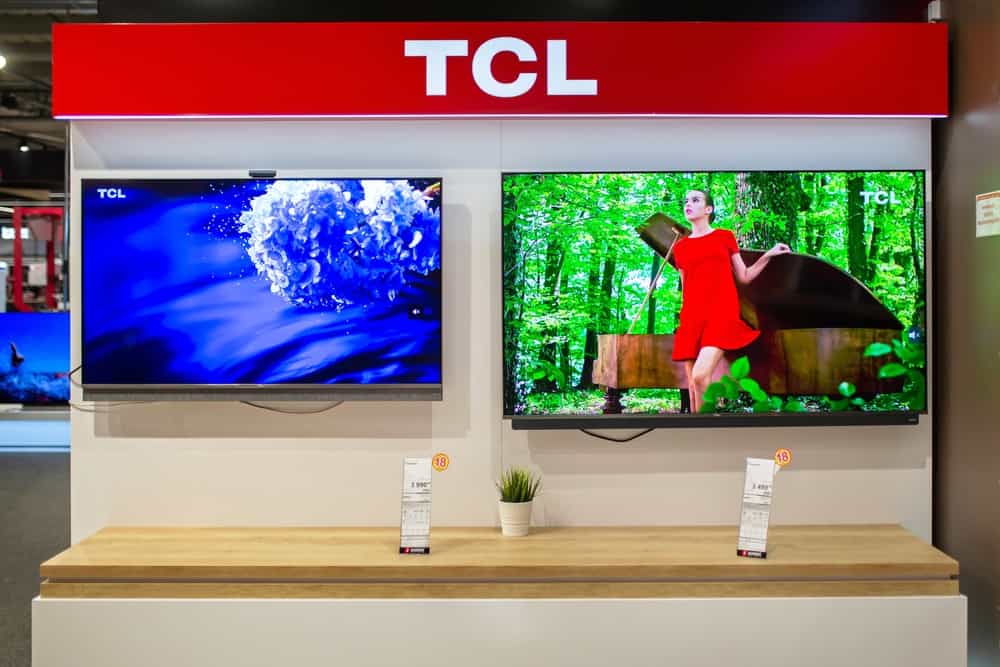
©8th.creator/Shutterstock.com
- TCL takes its name from Telephone Communications Limited, its original company name.
- TCL is currently a worldwide powerhouse in semiconductor displays.
- TCL aims to become one of the world’s leading intelligent technology developers.
- Roku features an intuitive interface that allows you to stream videos over the internet
- TCL is also planning to expand into the mobile market and has made some forays into the industry under the brand TCL Mobile.
TCL TV vs ROKU TV: Which Is Better?
There isn’t a “better” or “worse” between TCL’s Google or Android Smart TVs and their Roku TVs. While they’re competitors, they’re not really “better” or “worse”; they’re just different. Regarding the operating system, your decision will be based on what system you’re most familiar with rather than the specificity of the operating system you’ve chosen.
Comparing these is no different from comparing two televisions on all other axes. You’ll want to look at the technical specifications of your TV to ensure that it features everything you want in your new set. If you’re looking for a Smart TV, there’s more to think about than just the operating system. But suppose you don’t have strong opinions about the inner mechanisms of your TV. In that case, you should go with the one with an operating system you’re most familiar with and compatible with the rest of your smart home.
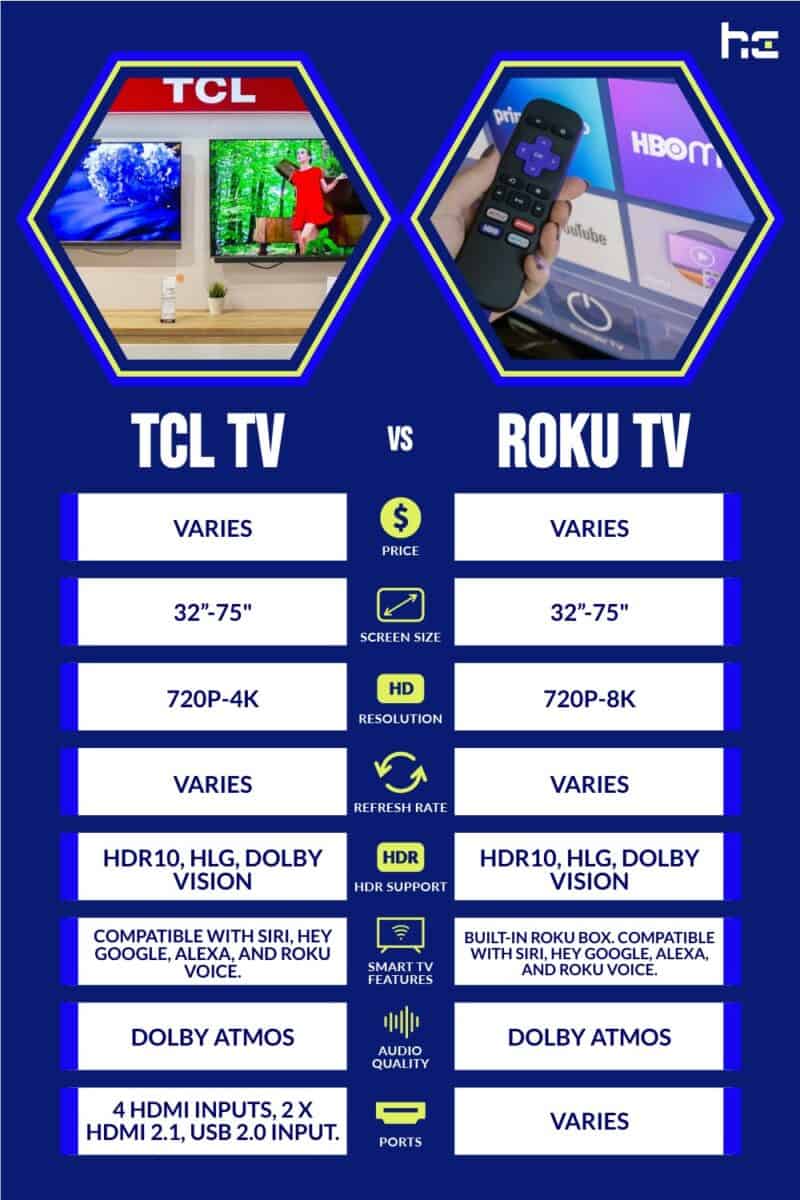
Up Next…
- How to Set Up Alexa in 8 Easy Steps Alexa is a great interactive app to use, but some set up is required. Follow this guide to have Alexa up and running in no time.
- How to Convert Google Doc to Word in 4 Easy Steps If you prefer creating documents with Google suite, here’s an easy guide to convert it to Word if required.
- Top 10 EVs With Longest Battery Life Many drivers are switching to electric vehicles. Here’s a list of the 10 with the longest battery life.
